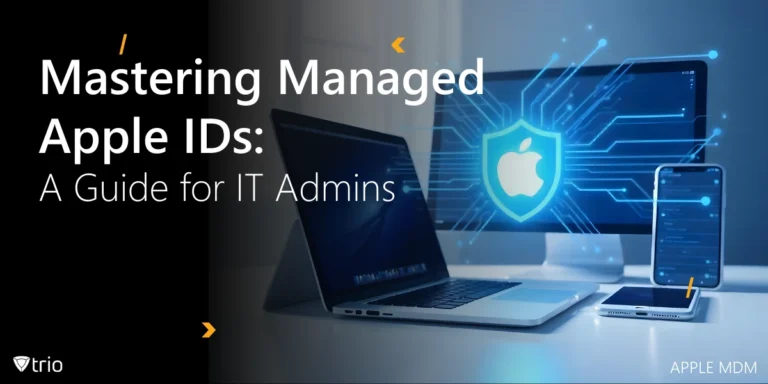In the cybersecurity landscape, managing access to sensitive information is more important than ever. Attribute-Based Access Control (ABAC) has emerged as a powerful access control model that enables fine-grained control over who can access what, based on specific attributes. This blog explores attribute-based access control examples in cybersecurity, diving into its benefits, challenges, and the best tools to implement ABAC effectively.
What is Attribute-Based Access Control (ABAC)?
Access control mechanisms are vital for securing digital environments, especially as systems grow more complex. Traditional models like Role-Based Access Control (RBAC) have served organizations well by assigning permissions based on predefined roles. However, as organizations face more diverse and dynamic IT environments, the need for a more granular and flexible access control approach has become apparent.
Attribute-Based Access Control (ABAC) addresses this need by making access decisions based on attributes associated with users, resources, environments, and actions. Unlike RBAC, which assigns permissions based on roles, ABAC evaluates attributes in real-time, allowing for more fine-grained and context-aware access control. This makes ABAC particularly effective in modern IT environments, where access needs can change dynamically based on varying factors like user location, time, or the specific task being performed.
In comparison, Relationship-Based Access Control (ReBAC) focuses on the relationships between users and resources, granting access based on factors like collaboration or project team structures. While ABAC evaluates attributes, ReBAC assesses these relationships, making it a useful model for scenarios where access is dependent on the user’s role in a team or project. Organizations can also use ReBAC in conjunction with ABAC for even more dynamic and flexible access control, combining the strengths of both models to address different organizational needs.
Attribute-Based Access Control (ABAC) Examples
ABAC has various real-world applications across industries. Here are some examples of how ABAC can be implemented:
1. Healthcare Systems – Patient Data Access
In healthcare, ABAC can be used to regulate access to sensitive patient data based on attributes like the user’s role, department, and the urgency of the medical situation. For example, a doctor treating a patient in the emergency room may be granted access to a full medical record based on their role as an emergency care provider and the critical nature of the treatment. Conversely, administrative staff, despite being within the same department, may only have access to non-sensitive data such as billing information. ABAC ensures that the right level of access is granted depending on the context, such as time of day, location, or the patient’s consent.
2. Financial Services – Transaction Approvals
In the financial sector, ABAC is often used for transaction approvals, where access to sensitive financial systems is granted based on a combination of user attributes such as their role (e.g., financial analyst, auditor), the value of the transaction, and the region where the transaction is occurring. For instance, a senior financial manager may have the authority to approve large international transactions, while a junior analyst may only have access to approve smaller, local transactions. The ABAC policy can also consider factors like the time of day or the security status of the network to enforce stricter controls during off-hours.
3. Government – Employee Resource Access
Government agencies often use ABAC to manage access to confidential resources. For example, an employee with a security clearance may be granted access to classified government documents, but only under specific conditions such as their location, the type of work being conducted, or their current assignment. In this case, attributes like security clearance level, geographic location, and task context are used to ensure access is appropriate and necessary, minimizing the risk of unauthorized access or data leakage.
4. Retail – Inventory Management
In the retail industry, ABAC can help secure access to inventory management systems. For instance, a store manager may have the ability to adjust inventory levels, but only if they are physically present in the store and during business hours. Alternatively, a regional manager may access inventory data across multiple locations but only for certain product categories. Access can also be conditioned on the user’s job role, store location, or the specific inventory system they are interacting with. By using ABAC, retail organizations can finely tune who can access what information, ensuring sensitive data is protected without unnecessary restrictions.
5. Cloud Platforms – User Permissions
On cloud platforms, ABAC can regulate user permissions based on a variety of dynamic attributes. For example, a user’s access to a specific cloud storage bucket can be determined by their department (marketing, finance, etc.), the project they are currently working on, or their current workload. Access control could also be affected by the user’s geographical location, ensuring that users only access data from regions where they are authorized. ABAC in the cloud environment is highly effective in managing complex, ever-changing access needs, especially for large enterprises with diverse teams and workflows.
6. Education – Student Data Access
In educational institutions, ABAC can be used to control access to student data based on user attributes such as their role (teacher, administrator, counselor), the grade level, or the specific course being taught. For instance, a teacher may only be allowed to access data relevant to their assigned classes, whereas an academic advisor may be granted access to the entire student’s academic history for advising purposes. By leveraging ABAC, educational institutions can ensure that only authorized individuals access sensitive student information, while maintaining privacy and compliance with regulations like Family Educational Rights and Privacy Act (FERPA).

Benefits of ABAC
ABAC offers several key advantages for organizations looking to enhance access control:
- Enhanced Flexibility and Access Control Granularity
- ABAC provides fine-grained access control by tailoring decisions to specific scenarios.
- Allows dynamic management of access, adjusting permissions based on real-time conditions rather than static roles.
- Reduces over-permissioning, improving security by ensuring users only have access to the resources they need.
- Improved Compliance
- ABAC helps organizations meet regulatory requirements like GDPR and HIPAA.
- Enables the creation of policies based on resource and user attributes, demonstrating compliance with strict data protection standards.
- Stronger Security
- By limiting access to only necessary resources, ABAC reduces the risk of unauthorized access and data breaches.
- Minimizes over-permissioning, ensuring that users do not have excessive access rights.
- Scalability for IT Ecosystems
- ABAC’s attribute-driven model supports growth without the need for constant updates to roles and permissions.
- Makes scaling access control easier as IT environments become more complex.
Challenges in Implementing ABAC
If your organization wants to start using ABAC, it’s important to keep the challenges in mind as well.
Complexity in Defining Policies
One of the biggest challenges in implementing ABAC is crafting clear and comprehensive policies. Balancing security and usability can be resource-intensive.
Attribute Management
Managing and updating attributes, such as user clearance or device types, requires continuous effort. This is particularly challenging in dynamic environments.
Integration with Legacy Systems
Legacy systems often rely on traditional access control models. Integrating ABAC into such environments can require significant customization.
Ongoing Monitoring
ABAC policies need regular monitoring and refinement to remain effective. Over time, organizational needs and environments evolve, requiring updates to access control policies.
8 Best Tools for Implementing ABAC
If you’re considering implementing ABAC, here are some tools to help you make your decision:
1. Axiomatics Policy Server
Axiomatics offers enterprise-grade ABAC solutions with fine-grained access control. It supports integration with modern applications and legacy systems, making it ideal for large organizations.
2. NextLabs Entitlement Management
NextLabs excels in regulatory compliance and sensitive data protection. It provides robust ABAC capabilities for diverse industries.
3. Amazon Web Services (AWS) IAM with ABAC
AWS IAM allows you to define ABAC policies for your cloud infrastructure, providing scalability and security for dynamic environments.
4. Okta Identity Governance
Okta combines identity management with ABAC-style access control, ensuring secure and seamless user experiences.
5. Ping Identity
Ping Identity offers versatile access management solutions, including support for ABAC policies tailored to enterprise needs.
6. ForgeRock Access Management
ForgeRock provides comprehensive identity management with advanced ABAC capabilities, suitable for complex IT ecosystems.
7. Google Cloud IAM with ABAC
Google Cloud IAM simplifies ABAC implementation for organizations leveraging Google Cloud services, ensuring secure access decisions based on attributes.
8. SailPoint Identity Platform
SailPoint focuses on governance-driven access control, enabling organizations to implement ABAC efficiently and at scale.

How Trio Can Help with ABAC
Trio provides an intuitive Mobile Device Management (MDM) solution with robust support for Attribute-Based Access Control (ABAC) policies. By leveraging user and device attributes, Trio enables fine-grained control over access decisions, ensuring secure and compliant device management based on organizational goals. User roles, departments, and device factors like OS version, compliance status, and security posture help determine resource access.
Trio also supports dynamic, context-driven policy enforcement based on factors like location or time. For enhanced ABAC functionality, Trio integrates seamlessly with Identity and Access Management (IAM) systems like Okta or Ping Identity, enabling a comprehensive, attribute-driven access model. This approach, combined with Trio’s device management capabilities, supports a Zero Trust security framework, providing flexible, secure access across the organization.
With Trio, IT professionals can easily manage access, monitor compliance, and scale their ABAC systems. Sign up for a free demo today to see how Trio simplifies ABAC implementation for your organization.
See Trio in Action: Get Your Free Trial Now!
Conclusion
ABAC represents the future of access control, offering unparalleled flexibility and security for organizations of all sizes. By exploring its benefits and challenges, IT professionals can make informed decisions about its implementation. From ensuring compliance with regulations to enhancing operational efficiency, ABAC provides a robust framework for access control. Equip yourself with the right tools, define clear objectives, and take the first step toward transforming your access management strategy. Evaluate your goals, choose the right solutions, and embark on your ABAC journey with confidence today.




